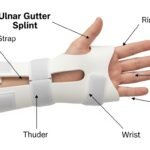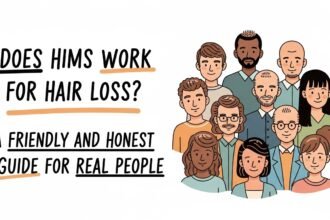Introduction
If you or someone you love lives with epilepsy, you may have heard the word SUDEP. It stands for Sudden Unexpected Death in Epilepsy. This means a person with epilepsy dies suddenly and with no clear cause, often during or after a seizure. SUDEP is rare, but it’s very real—especially for people with certain types of uncontrolled seizures. Learning about SUDEP is not meant to scare anyone. Instead, it’s about understanding the risks, making smart choices, staying aware, and working closely with doctors. The more we know, the more we can do to reduce the chances of SUDEP happening. In this article, we’ll explore what SUDEP is, who is at risk, the signs to watch for, and most importantly, how to lower the danger. We’ll break it all down in simple, easy-to-understand language so that anyone of any age can follow and feel confident in the steps they can take.
What Does SUDEP Mean?
SUDEP stands for Sudden Unexpected Death in Epilepsy. It happens when a person with epilepsy dies suddenly, and doctors can’t find another clear cause—like heart attack, stroke, or injury. Usually, the person was fairly healthy other than having epilepsy. Most SUDEP deaths happen during sleep or when no one is around. It tends to occur in people who have seizures that are not fully controlled by medicine. While it doesn’t happen often, SUDEP is one of the top reasons why people with epilepsy die young. That’s why it’s so important to talk about it, learn how it works, and understand ways to help prevent it.
Who Is at Risk for SUDEP?
Anyone with epilepsy can be at risk for SUDEP, but some people have a higher chance than others. People with frequent seizures, especially generalized tonic-clonic seizures (also called grand mal seizures), are most at risk. These are seizures where a person loses consciousness and has full-body shaking. SUDEP is more common in young adults, especially men, and usually happens when the person is alone or asleep. People who stop taking their seizure medication, have stress, or poor sleep habits can also face higher risks. But everyone is different, and SUDEP doesn’t happen to every person with uncontrolled seizures. Still, learning about the risks allows families and patients to make safer choices.
What Causes SUDEP?
Doctors are still learning what exactly causes SUDEP, but there are a few strong theories. One possible cause is breathing problems during or after a seizure. Sometimes, the seizure makes the person stop breathing for too long. Another possible cause is heart problems. A seizure might affect the heart’s rhythm, causing it to stop suddenly. Another possible but less known cause is that the brain becomes too weak to recover after a powerful seizure, especially in sleep. Even though we don’t know everything about why SUDEP happens, researchers continue to study it closely to find answers and develop better ways to prevent it.
Signs That May Happen Before SUDEP
Because SUDEP happens suddenly and often during sleep, it’s tricky to predict. Still, there may be early warning signs like longer seizures, clustering seizures (more than one in a short period), or shortness of breath after a seizure. If someone is having more seizures than usual or their seizures look different, that may be a reason to talk to a neurologist. Other warning signs could include feeling super tired after a seizure, confusion that lasts longer than normal, or changes in heart rate or breathing. Tracking seizure patterns is one helpful way to spot these changes early and get help before problems grow.
How Common Is SUDEP?
SUDEP is rare overall but is still one of the main risks for people with severe epilepsy. Doctors say about 1 in 1,000 people with epilepsy will experience SUDEP each year. For people with uncontrolled seizures or generalized tonic-clonic seizures, the risk rises to 1 in 150. That means the risk is low if seizures are well-managed. Even though those numbers may seem scary, knowing them actually helps. When families and patients understand their risk, they can take steps to reduce it. Talking with your doctor about your risk level is a perfect starting point for peace of mind and a safer plan.
Can SUDEP Be Prevented?
The good news is that many steps can help lower the risk of SUDEP. Number one is taking seizure medication regularly and on time. Skipping doses or stopping meds suddenly can lead to more seizures, which raises SUDEP risk. Also, try to get enough sleep, reduce stress, and avoid seizure triggers like flashing lights or alcohol if those affect you. Some people use seizure alert devices that can notify someone nearby if a seizure happens. Having someone present during a seizure, especially at night, can also make a big difference. The key to prevention is good seizure control, awareness, and a trust-based relationship with your doctor.
The Importance of Talking Openly About SUDEP
Many people with epilepsy and their families have never heard of SUDEP until a doctor or advocate brings it up. But it’s important to talk about, just like you would discuss safety rules for any serious health condition. Talking about SUDEP doesn’t mean something bad will happen. It means you care enough to be prepared. Health experts now encourage open conversations between doctors, patients, and families about SUDEP. Older teens and young adults with epilepsy should also understand it so they can take control of their own safety. Talking does not cause fear—it builds knowledge, action, and support.
Tools That Help Track and Reduce Seizure Risk

To help bring down the chances of SUDEP, many people use simple tracking tools. Seizure diaries are helpful for noticing patterns and changes. These can be written in notebooks or kept with apps made for epilepsy care. Wearable devices are also popular now. Some wristbands can detect abnormal movement or changes in heart rate, and they send alerts to caregivers. These alerts can help someone get help faster, which might lower SUDEP risk if a seizure happens while the person is alone. Regular check-ups and brain scans are also valuable tools that doctors use to adjust care and keep patients safe over time.
Real-World Stories and the Impact of SUDEP
Hearing real stories can help us understand that SUDEP is not just a medical word—it affects real families every day. Some parents have lost a child without warning due to SUDEP. Others have made life changes after learning about it, choosing better seizure monitoring and creating nightly safety plans. One young adult with epilepsy started using timers, alarms, and a watch that detects seizures just to stay extra safe at night. These real stories bring SUDEP closer to home and remind us why education and awareness are so important. They also show that with the right care and tools, many people live full, happy lives despite the risks.
SUDEP and Nighttime Seizures
Almost all SUDEP cases happen during sleep. That’s why it’s extra important for people with nighttime seizures to stay alert and prepared. Some choose to sleep near a family member or leave the door open so others can hear if something happens. There are also mattress sensors, seizure alert pillows, and monitoring apps that send noise or movement signals from the bed. Sleep is supposed to be peaceful, so these supports can bring a sense of calm to people dealing with epilepsy every day. If seizures mostly happen at night, talk to your doctor about the safest sleep setup for you.
The Role of Caregivers in Preventing SUDEP
Caregivers play a powerful role in preventing the dangers of SUDEP. Whether you’re a parent, partner, friend, or healthcare worker, being mindful of seizures helps everyone. Simple actions matter—like learning seizure first aid, helping the person stick to their medicine schedule, or just being nearby during risky times like sleep or stress. Taking note of how long seizures last or when they happen helps doctors give better advice. Caregivers should also know when to call 911 and how to roll a person on their side if a seizure happens. Being prepared saves lives—and makes everyone feel safer and more supported.
SUDEP Research and Hope for the Future
Researchers around the world are working every day to understand SUDEP better. New research looks at how the brain, heart, and lungs work during seizures. Scientists are studying brain activity, breathing problems, and heart rate changes to discover why SUDEP happens and how to stop it. New devices and apps are also moving into the medical space, giving patients more ways to track and manage their epilepsy. As more people speak out and share stories, funding rises and insight grows. The future holds real hope for fewer SUDEP cases through awareness, education, and smarter care plans.
FAQs
1. What exactly is SUDEP?
SUDEP stands for Sudden Unexpected Death in Epilepsy. It’s when someone with epilepsy dies suddenly, and no clear cause is found.
2. How likely is SUDEP to happen?
It’s rare for most people—about 1 in 1,000 each year. But risk is higher if seizures are not well controlled.
3. Can kids have SUDEP too?
Yes, but it’s more common in young adults. Children with severe epilepsy can be at risk, so it’s still important to discuss.
4. Can taking medicine prevent SUDEP?
Yes, taking seizure medication on time and every day greatly lowers the chance of SUDEP for most people.
5. What should I do if I’m afraid of SUDEP?
Talk to your doctor. Ask about your specific risk and how to take smart steps to stay safe.
6. Can I still live a normal life with epilepsy and SUDEP risk?
Absolutely. With awareness, doctor support, and safety plans, many people with epilepsy live full, happy lives.
Conclusion
Learning about SUDEP isn’t meant to scare you. It’s meant to empower you. Knowing the risks, the signs, and the steps to stay safe means you’re one step ahead. By following your treatment plan, tracking your health, and staying in touch with your doctor, you can take huge steps toward preventing SUDEP. You’re not alone—there are tools, caregivers, and communities ready to help. Awareness is the first step to change, and every person educated about SUDEP brings the world closer to saving lives. If this guide helped you, please share it with others who might benefit. Together, we can build a world where epilepsy is better understood and SUDEP is no longer a silent risk.






